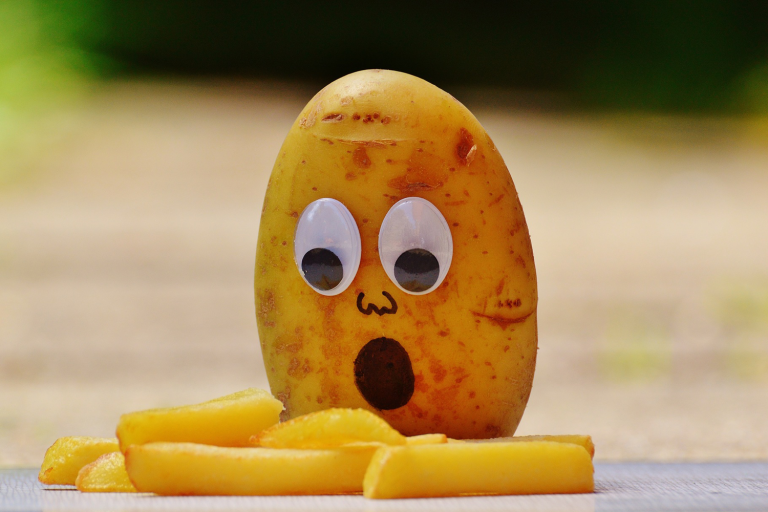W
e’ve been hearing the term “fake news” flying around and quite possibly it may be the 2017 “political term of the year” – if such a category exists. But don’t worry, I am not going to get all political on you with President Trump this or President Trump that. I think you hear enough of that kind of stuff bombarding you from all angles. Instead, I want to share with you things that you are told about you and your life that simply ARE NOT TRUE!
It’s time that amid the banter and turmoil going on, we reclaim control over our own life. In order to do that, we must decipher fact from fiction.
Fake News Alert #1 – I HAVE TO STAY IN MY JOB BECAUSE IT’S ALL I KNOW AND IT PAYS THE BILLS (even though I really don’t like it)
I realize that it is easier said than done when it comes to “having the job of your dreams.” However, ask yourself, “Are you worthy of having a life worth living that is fulfilling, exciting, meaningful, stimulating, and something you enjoy doing the majority of the time?” The answer is of course a resounding: YES! Everyday may not be peaches and cream, but most days you should be waking up anticipating a day that is fulfilling and joyful. We want to be “filled, fully” and that is all you can ask for when it comes to this life.
To make any change, it starts with a thought – a vision you might say – about what it is you truly want. From there, it’s about putting the wheels into motion and taking action to move toward achieving your goals. The thing to remember when faced with challenge is two-fold. One is something my father would tell me: “If it were easy, everyone would do it!” Second, is that if another human being is doing what you want to do, why can’t you also do it?
You must first figure out what course of action you must take to get a better job and go do it. It may mean going back to school to get a college education, or obtain another degree. Or it may require relocating to where there is more opportunity for the field you are looking to get into? How about just sitting down at the computer and putting together your resume and submitting applications? Whatever you decide is the best way to go, realize that Rome wasn’t built in a day. Anything good takes time and every expert was once a beginner. Get the skills you need to achieve the dream you are looking to receive and breakthrough beyond the fear of the unknown.
Fake News Alert #2 – YOU’RE NOT GOOD ENOUGH
In today’s culture, there is a lot of pressure and expectations to live up to. There are these subtle societal norms and pressures that may adversely affect how you feel about yourself. For instance, looking “beautiful,” getting married and having kids by a certain age, making a certain amount of money to be respected, behaving in a manner that is accepted by people in your circle, and “doing what everyone is doing.” Being “good enough” is highly overrated and in truth is a figment of our own thoughts or misperceptions that may lead us down an unhappy and unfulfilled road.
People don’t feel good about themselves for a number of reasons. Maybe their social circle isn’t big enough and they aren’t able to keep up with the Jonuses. The kiss of death for self-worth and confidence lies in a comparison to others socially, financially, living quarters, or status in society where it becomes a reflection on what they “are or aren’t doing” with their lives. What you achieve does not determine how much you succeed. Rather than focusing your thoughts on how things are in a “negative state of affairs” or what you are lacking, be appreciative and live in a state of gratitude. Tell yourself that you are enough just the way you are and love every ounce of your unique self. There is no one quite like you in this world so embrace and love yourself first!
Don’t believe everything you hear or all the thoughts that go on in your mind. The English writer H.G. Wells once said “Cynicism is humor in ill health.” Your challenge is to replace those thoughts with hope and love so you are able to discover your greatest gifts.
Fake News Alert #3 – PUTTING OTHER PEOPLE’S NEEDS FIRST
I will come right out and say it. You are NOT SELFISH for putting your needs first. Only when you are healthy can you be of service to others. Only when you are happy can you be uplifting, positive, and helpful for others. Only when you are doing what you love to do will you then set the world on fire and be of service to the world! Plain and simple.
If you let someone else’s happiness go in front of your own and influence your own happiness, then you are living from a state of withOUT and not from withiIN. What I mean by that is that if you are searching for happiness outside of yourself, you will be largely dependent on external things or sources to provide you this emotional state of joy, which can lead to disappointment. This approach can turn unpredictable and out of your control, which may exacerbate an emotional roller coaster that becomes perpetual.
Please realize that putting your happiness as a top priority is not selfish at all, despite what you may have been told or heard from others. It’s just the opposite. It is one of the most unselfish things you can do for everyone in your life. During one of my “Empower-Hour” podcasts, I had an opportunity to speak with one of the leading experts on the topic of happiness, author and transformational leader Marci Shimoff.
Marci summed it up by sharing a Chinese proverb which stated:
“When there is light in the soul, there will be beauty in the person.
When there is beauty in the person, there will be harmony in the house.
When there is harmony in the house, there will be order in the nation.
When there is order in the nation, there will be peace in this world.”
Happy Discoveries!








